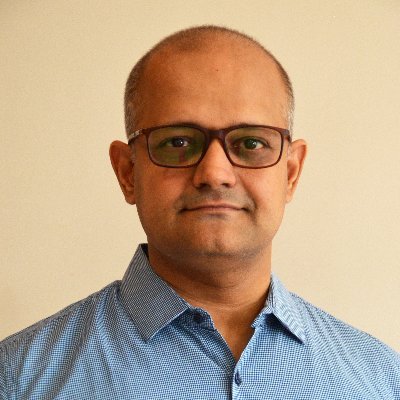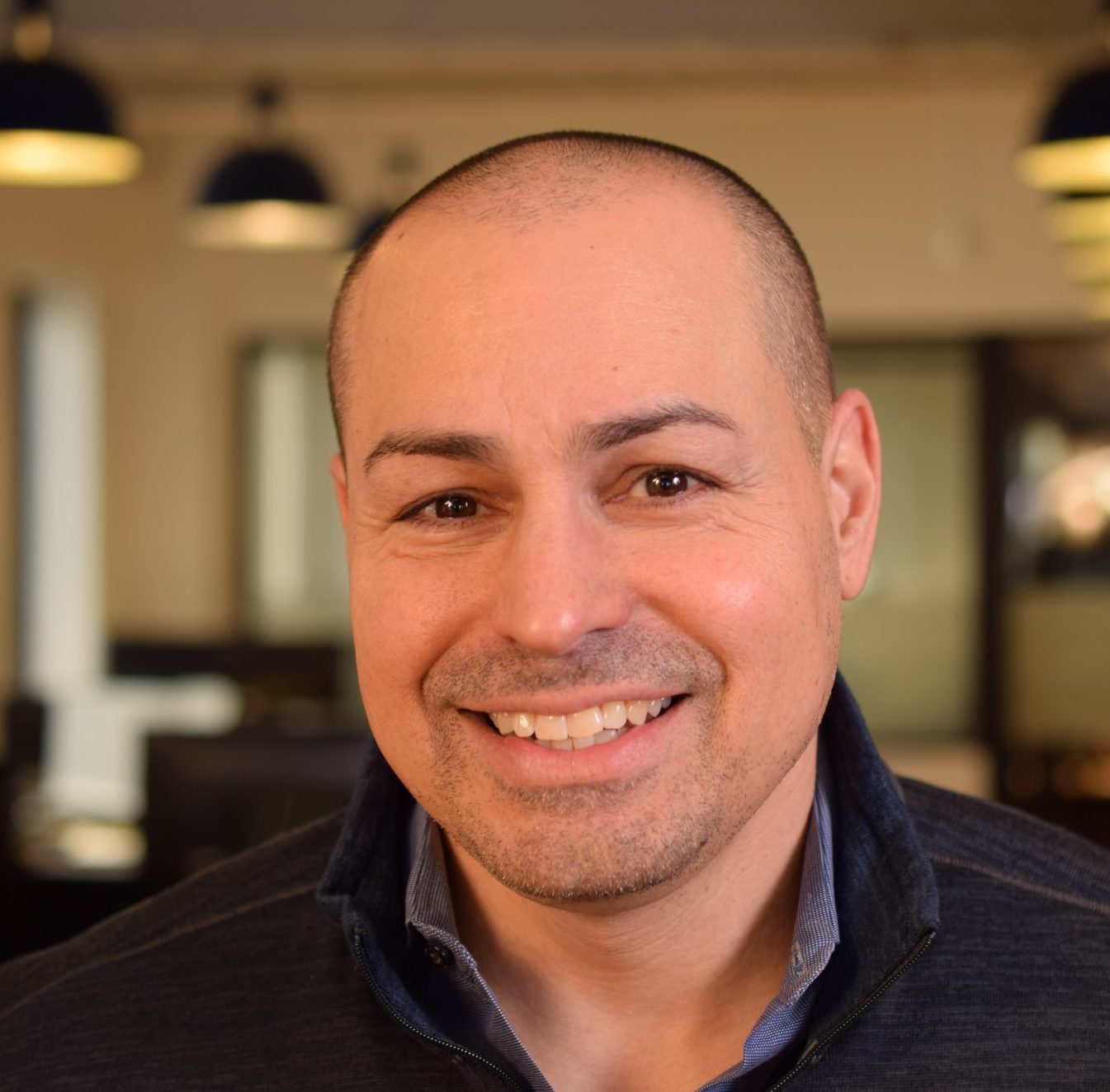Leadership has always been a challenge. But after forcing everyone to experiment with a digital set up, we all saw a whole new level.
Tanmay Vora is a leadership expert, and he helped us understand the major challenges facing leaders in a digital world.
Communication
Tanmay says that communication must be a skill that digital leaders excel at. There’s a certain amount of ambiguity that can be tolerated when everyone is in an office and can pick up on additional signals. However, when the whole company is digital, that puts more pressure on being more precise and clear in communication.
This doesn’t just mean sending Slack messages all day. Digital leaders need to be skilled in picking the right type of medium for the right situation. There are lots of remote communication challenges that leaders have to be familiar with, even when the best solution is a phone call.
1:1s
The 1:1 has become an essential part of the leader’s toolkit. People need connection and a dedicated slot to check in and see how people are doing is essential. They need to be frequent enough that people feel like they are being heard, but not so frequent that they are overwhelming.
1:1s need to have a lot of clarity. No one should be surprised by a performance review note. Keep everything transparent and open and have genuine conversations.
More challenges for the leader
Tanmay touched on many more challenges of leaders in the digital age. They must push for tight alignment. They need to address loneliness, lack of team spirit, and a blurred boundary between work and life.
But above all, Tanmay said that leaders must be experts at building trust. Trust is essential to any team, but digital teams need it even more.
Links
Tanmay on LinkedIn
Tanmay on Twitter
Welcome back to The Digital Workplace podcast. Today our guest is Tanmay Vora. He is the founder of QAspire Consulting. Hey Tanmay, how are you today?
Hey Neil, I’m doing very well. Thank you for having me on the show. I’m thrilled to be a part of this.
Oh, we’re thrilled too. You and I have a lot of similar interests. We’re going to be talking about a lot of great stuff. We’re going to get into leadership, building teams in digital workplaces. But as always, first let’s check to make sure you are a real human being. So, your capture question is this, what do people closest to you say is your best characteristic?
A lot of my friends tell me that humility is my strength, that being able to lead an organization without letting all of that go into my head, keeping my heart in the right place with people, I think that’s my superpower.
Good. And it’s always good when somebody else says that you’re humble. It’s hard when you’re the one telling people you’re humble. But if other people say it, then it’s great. Well, good. Let’s start off with just a little bit about QAspire, this new venture that you started up with. How did that get started and what’s your background in leadership in digital spaces?
So, after leading large organizations for about 23 years, and my last stint was as a Country Managing Director for a large Finnish company having a 700 people Development Center in India, and I was leading that whole organization as the Country Managing Director, all of this experience and having written about leadership learning and change for about 14 years, has given me a very good playground in terms of implementing the kind of leadership beliefs that I hold very closely, and experiment them in real time with the organizations that I was leading and managing.
And all this experience culminated into QAspire Consulting, wherein I bring my visual thinking superpower combined with all my experience and curiosity to learn more about how do we really build inclusive digital workplaces. So, QAspire Consulting is a combination of visual consulting, graphical recording, leadership development interventions, and a lot of capability consulting, in terms of, how do organizations really build capabilities in terms of culture, people, values, alignment, and competencies that they require to strategically win at their games.
Tanmay, let’s go back to the early part of your career. What’s something that you learned and some of those first positions you held about leadership that you still feel like it’s true today, despite all the changes that have happened?
Yeah. I think I was fortunate to start my first leadership position as a manager of quality in an organization where I didn’t have a direct reporting team. I was a lynchpin trying to keep different groups with different competing priorities together. And fortunately, and the reason I say fortunately is because that taught me the power of leading with influence and leading without authority. Because technically, I didn’t have authority over anyone, and I still had to ensure that they follow the processes that I define with them and include them into the whole process, and that’s how my journey of inclusive leadership and leading with influence really started.
And along the career, even when I’ve had authority positions in the organization’s, my natural default state of leading people is to lead from the place of collaboration and trust, to lead from the place of empathy, and enable people to really grow when they work with me and my groups. So, that’s been the journey. That’s been the early experiences of leading. Obviously, it was not easy. Obviously, I learned from the “University of Hard Knocks”, as they say, but it was all worthwhile at the end of the day.
I think that’s great, the example you gave about how to be a leader when you don’t have authority. Because a lot of times people walk into a leadership role and immediately, they have all these direct reports and people have to listen to them and they’re kind of coerced into that. So, it’s fantastic that you got the experience of being a leader yet not having all that coercion around. You had to build that trust. That’s a great example. Tell us about something recently that you’ve come across, like in the last year, throughout all this pandemic, when so much of team building and leadership has gone digital. What’s something new that you learnt this past year that you didn’t really anticipate learning?
My whole notion of leadership was centered around meeting people on a day-to-day basis, face to face, shaking hands with them, going to their desks, checking in, having lunches and dinners together. So, a lot of my leadership style was very much in person. And if there’s been one significant learning in the last one year then that has been that how do we become a better digital leader. How do we lead virtually and still be effective at what we’re doing? And I think that’s been a totally different ballgame compared to walking into a building, meeting people, this has been a different ball game altogether. And it’s been a significant learning for me, personally.
So, how have you adapted? What are some new things that you’re doing in that world? Or did you just feel like, hey, this is not going to work at the start and then it ended up working. Or what was that journey like for you?
So, I think that the fundamental principles of connecting with other human beings, with team members, the need for them to be heard, the need for them to be appreciated, the need for connection more than communication, is still there. So, I took those basic building blocks of leading a team, the foundational elements of leading a team, and then started mapping the technologies that we have at our disposal to align with those principles. So, for example, the need for appreciation, and how do we really use digital tools to appreciate our people. And so, we started this experiment of having a Kudoboard where the whole team appreciates each other and the person who receives most appreciation at the end of the month, we do some special reward and recognition, and so on and so forth. So, those kinds of experiments really, really help.
We use a lot of virtual communication, video-based communication, Slack channels, Microsoft Teams, Yammer, etcetera, to really bring all of this together so that people don’t feel isolated or alone when they’re working from remote. Obviously, it was a trial-and-error process. But at the end of the day, I think a few things that work include constant communication with the team members, checking in personally through one-to-ones I think has been a practice that I’ve been following for all my career, but more specifically in the digital times the need to connect with people on a one-to-one basis without overwhelming them with too many meetings, I think that’s been a real challenge that had to be conquered.
Yeah. I want to dive into this idea of constant communication more. Because on the one hand, yes, we definitely need to be in communication on a consistent basis. And yet, there’s also this feeling of, constant taken to the extreme, where it’s like, literally, throughout the day, you’re having one conversation or you just have Slack messages or Microsoft Team conversations going on all day long, which is completely exhausting, both for the leader and the other person who feels like they need to stay in touch. So, define a little bit more. How would you define constant communication, but in a healthy way, within those boundaries?
So, I think the most important thing that often gets missed in the virtual communication mode is the ability to build trust with people. And especially with new team members we are onboarding remotely, who you know little about, and who know very little about you, I think that’s where it’s very hard to build the kind of trust that really happens in person. And overall cohesion in the team takes a backseat when people are working virtually and are constantly distracted in their home environment. How do you really bring them together?
So, I think the balance that has worked for me is that, once in a day we do a team huddle, which is early in the morning. So, teams get together and prioritize the day, and they say, here’s what we’re doing, here are possible roadblocks, and so on and so forth. Now, when the team progresses through the day, if they hit a roadblock, then we have a Microsoft Teams channel going on where there is a lot of that conversation that keeps going on about who’s doing what, where are the dependencies and so on. And we have encouraged people to pick up the phone and talk to the other person when they need help rather than relying on Team channel so that even if somebody is not attending to Teams constantly, they’re still able to get things done through a phone call, and so on.
What we also do is that once in a week we do a one-to-one, wherein the focus is not that much on work but it’s more on checking-in personally, in terms of how is that person doing? How has been the week? How is that person feeling about the organization? About the team? What is impeding the progress with that particular team member? It could be personal challenges, it could be anything, right. So, it’s more of a one-to-one connection.
And there’s a lot of informal conversation happening in the one-to-one as well. Because I think that the most significant learning between a manager or a leader and a team member or I would rather call it two colleagues, happens when they share ideas in an informal fashion. And that’s what these one-to-ones are enabling, in terms of, every week you talk about things outside of the scope of work. I think that really enriches the conversation and the connection between the two people.
Let’s talk a little bit more about the one-to-ones. Because I see what you’re saying, and I also have this feeling of when I do one-to-ones with people, sometimes there’s part of a personal conversation like how’s it going and tell me about what’s going on in your life outside of work. Then there’s this coaching element to it of trying to help them walk through situations, say, okay, tell me more about that, or let’s figure out how you can build up your career in this way. It also feels like it’s part performance like you’re reviewing their performance over the last week or month or so. And also feels like sometimes it’s like status updates, like getting things up. Should a good leader separate those conversations out or just let them be all mixed together? Or what’s the good and bad in those one-on-ones?
So, I think that the one-on-ones have to be informal and unstructured. That’s my firm belief. Because when you have a very tight agenda around one-to-ones, and I have had made that mistake of keeping one-to-ones very agenda centric, but when you do one-to-one on a weekly basis, the flow of conversation between the team member and the manager is so fluid and the conversations so flows that distinction probably is not required. Because there are times when the work agenda is slightly lower than the personal agenda. There are times when the employee wants to discuss their growth aspiration. There are times when they want to discuss an interpersonal problem that they’re facing in the team, and so on and so forth.
What has worked for me is that I’ve kept these one-to-ones really, really informal and having no specific agenda. My core focus there is on listening rather than speaking. I ask a lot of open-ended questions, and that gives me a very good understanding of the pulse of the team member. Performance conversations are more structured. However, even one-to-ones serve very well in terms of setting the expectation in a very gentle and soft manner, in a way that when you actually do a performance discussion there are no surprises that the person gets. Because everything that we are discussing in a formal performance meeting is already discussed, week on week, with the employee in a one-to-one format.
And I think that rule of no surprises has really served me well over the years. It saves me a lot of heartburn and it saves the employee a lot of heartburn because they’re not going to get any new surprises. And everything you’re saying now is something that you might have shared with them before, and so, it’s already known to them.
Yeah. I felt that so much. I was doing a performance review for somebody. It was like an official standard one that a large organization does on a quarterly basis. And I was going to start typing things which may have seemed critical or negative there, but I thought, well, we’ve already talked about this. They know what’s coming. These things are there, and there are also a lot of good things, too. But it was nice to feel like, okay, this wasn’t going to come as a surprise to this person. And we talked about that afterwards. And that was just a great experience. So, I think that’s a fantastic insight to share. Let’s skip over to what people are struggling with right now. As you’re talking with leaders and you’re working with other people, where are the hard things that they just can’t seem to figure out right now? Where are they spending most of their time just trying to think and find new solutions?
I think one of the things that most people are struggling with is that in a typical normal environment, in the ‘old normal’, if we may call it that way, people used to pack their bags at a certain point in the day and say that now this is the end of the workday, I’m going home. And that served as a physical sign saying that now my workday ends and my personal life begins and so on. In remote work, the boundary between work and life is really blurred and a lot of people are struggling with that. Even organizational expectations in many cases, unfortunately, are aligned in such a way that now that you don’t have to go to the office, why don’t you attend a late-night meeting or a very early morning meeting and stuff like that, and I think that a lot of people are struggling with. And especially with the waves of COVID going on, it becomes even more difficult, and people have been explicitly asking about not having late evening meetings and stuff like that. So, I think one of the things that people really, really struggle with is this blurred boundary between work and life.
The other important thing that people mostly struggle with is a lack of human connection at work leading to lack of team spirit. People feel that we are working together, we are doing our bits, but how does this whole thing contribute to the organizational strategy. So, there is a fair bit of lack of alignment that people face when they cannot see how their work is contributing to the larger purpose. And I think that’s where there’s a lot of leadership work that needs to be done.
I think loneliness, lack of connection, lack of team spirit, and blurred boundary between work and life, I think those are primary challenges that people face. I think, from a mental health perspective, people are facing anxiety over what happens to their job, what happens to the organization, what if they get stuck with COVID, and so on, and so forth. So, I think those are some of the real problems that people are facing, especially when they see people around them getting infected, getting hospitalized, and stuff like that. It takes a real toll on their productivity, and overall mental health. Just leads to more anxiety.
Alright. Tanmay, I’m going to ask you a question here. Looking at the future of digital leadership, like, if you’re looking at what it’s going to take for someone to be a very competent, successful, skilled leader over the next five years, let’s just say, in this new digital environment, give me three topics that you feel are important, like if you were designing a college course for, that you’d say, you got to learn this, you got to learn this, you got to learn this. What would be that if you were to redesign a new degree program for digital leadership? What would be those core courses that you would want to teach people?
I think the three that I would focus on is, A, building trust. And being warm as a leader. Because I created a sketch of this based on Amy Cuddy’s famous article on Harvard Business Review called ‘Connect, Then Lead’. And the crux of it is that most leaders come on board and they try to show their competence before they show the trust, before they are able to build trust, and therefore they risk engagement from people. And I think the ability to engage people, our ability to engage people in a meaningful way through building trust, I think is number one. And everything that a leader does ultimately ends up as a roadway or as a pathway to build trust. For example, communication, setting clear expectations. So, the first thing would be, the trust, how do we build trust.
Second, I would say is clear communication and articulating the vision so clearly that there is a fair bit of alignment. Because when a leader recruits other people, he or she is recruiting really smart people. They know how to do that job. What they often fail at is that they don’t know how all of this contributes to the end outcome, to the purpose, the strategic goals, and intentions of the organization. And I think that is number two.
So, building trust, creating alignment through communication, and the third I would say is to understand that a leader has dual responsibility of getting the work done and developing people. And too often leaders focus too much on getting the work done but they don’t pay enough attention to developing people. And I think if a leader constantly focuses on these three things, I think everything else would just be a subset of these three things. So, for example, the need to give constant feedback, the need to lead digitally. Those are all techniques. But the foundation of leadership is around trust, is around communication, and it’s about enabling people. So, using work as a resource to develop people just as much as using people as resources to get the work done. And so, striking the right balance between those two things, I think those would be my three picks.
I love it. I liked that you pick those. So many thoughts went off in my mind when you started talking about that. One, I totally resonate with the idea that I don’t think somebody who is just out to get work done is going to be successful in the next five years as a digital leader, like you’re not going to be able to lead your team well, you’re not going to get the stuff done you actually want to do well and that’s just a fading thing. There will still be people like that, but they will be in the minority for sure. I like the move from just being a task enforcer, like get the work done, to actually thinking about caring for the humans on your team, figuring out what they need, individualizing that care, moving out from that; thinking in terms of systems, that’s something we talked about; goal alignment, like you said, with your communication getting that strategy alignment. These are big things and this is not that we prepare leaders for the most parts before. And so, we need to start doing that. We need a generation of leaders now to build their own skills, and then figure out how to replicate that among other people. It’s a huge challenge.
Absolutely. And I see that challenge day in and day out within the organizations where leaders lack empathy, leaders fail to create alignment, and those are the things that hurt people the most, and probably also the organizations. And the way we build leaders today is also flawed, in terms of, the whole leadership development effort is focused on competencies more than the character. And I think we need more leaders whose leadership stems from their being rather than from a set of techniques or rather than just some competencies that they’ve learned extrinsically. Well, I think leadership is a function of one’s being, all of the past experiences that a person has really gone through. And all of that shows up when we work with people.
One thing I’d like to add in there and I’d like to get your opinion on this is, I feel leaders in a digital age need to have some kind of core human specialty, like understanding one bit of humanity, whether it’s human psychology, or whether it’s some part of biology, or some art form, or something that just makes us very unique in what we do. I’d want to know that somebody was a specialist in chess, or strategy, or something that’s just very unique about that, or understanding sleep patterns. I feel every leader should have this minor subject matter expertise in some topic that’s out there that helps them appreciate and understand humanity and be able to bring those things in, in an innovative way as well. What do you think about that?
Absolutely. I think that the best leaders I have worked with have all been multi-disciplinarians. They’ve been able to port the lessons from diverse disciplines and they bring all of that into their leadership practice. And therefore, I’ve been focusing heavily on alternative multidisciplinary approach to leadership. What we see in organizations today is that a lot of leaders, most leaders in fact, are so heavily focused on specialization that their focus is extremely narrow on, let’s say, certain set of technologies, or certain domains. However, the moment there is an expanded conversation, they fail to contribute to that conversation. And that’s where I think they also start developing a very limited view of how to build people. So, a technical leader would always try to build other people from a technology perspective. And so, that’s just one example of how that limitation inhibits a leaders’ ability to help people grow.
Yeah, love that one. Tanmay, this has been great. We could go on for a long time. There’s so much to talk about with leadership. I’m excited about this idea of just building a new system for building leaders and a new program for that. If people want to connect with you more and learn more about the stuff that you’re doing and talking about, where should they go to learn about that?
So, the easiest way is to go onto my website, which is Q-A-S-P-I-R-E, qaspire.com. I’m very active on LinkedIn as well. And on Twitter. On LinkedIn and Twitter, I’m @tnvora, TN Vora. That’s where people can really find me.
Excellent. Well, we will include all those in our show notes if people want to follow those along. I’m very excited to stay in touch with you as we continue these topics and conversations about leadership in a digital workplace. So, thanks so much for being on the show. We look forward to connecting with you again.
Absolutely. Thanks Neil, for having me here. It was just fun catching up with you and sharing my views on the digital workplace leadership for the future.
Tanmay brings more than 22 years of global experience in enabling organizational excellence through people, process and leadership. Through his diverse roles in operational excellence and quality leadership, he has built strong India organizations for multinational companies, consulted global customers, established processes and led large product development teams. He is extremely people-oriented with focus on creating conducive ecosystems for performance.
In his last role, Tanmay led the India operations of a Finnish major in enterprise Source-to-Pay space as Country Head and Director (R&D) where he created a strong strategic site that contributed significantly to the overall strategy.
Tanmay has recently founded QAspire Consulting where he partners with customers to help them build strategic clarity and capability through visual thinking, leadership development and organization building interventions.












